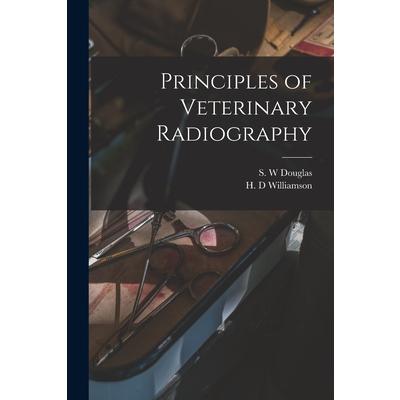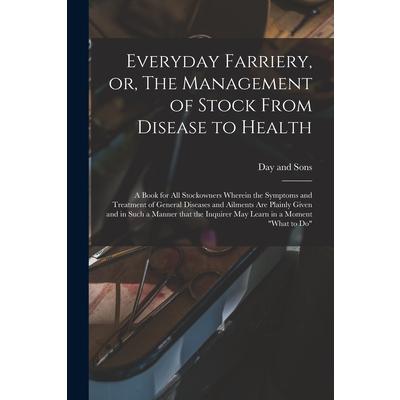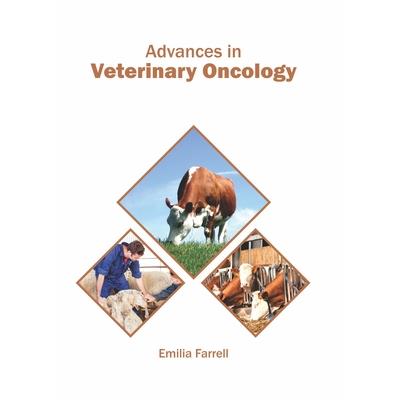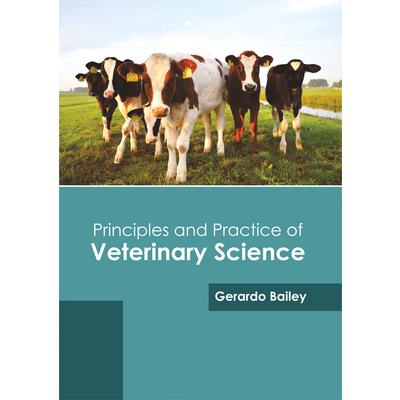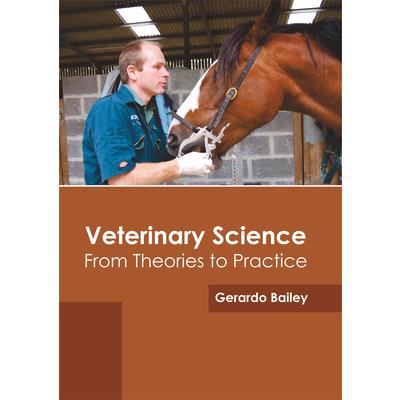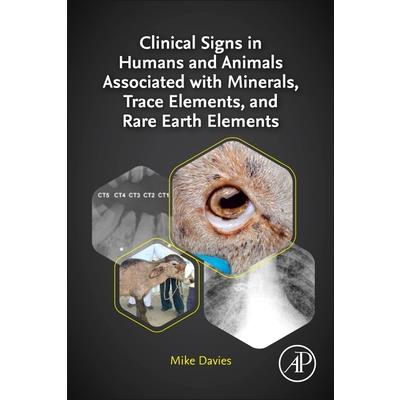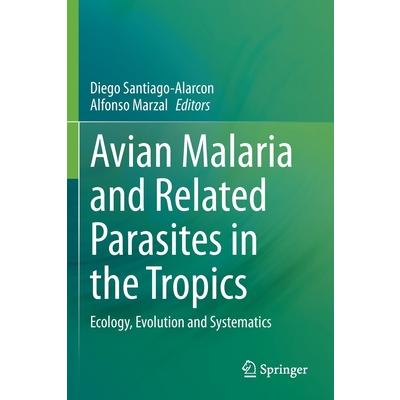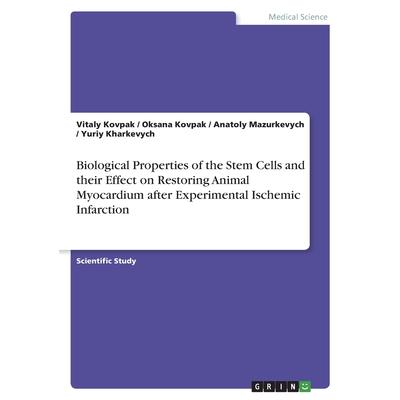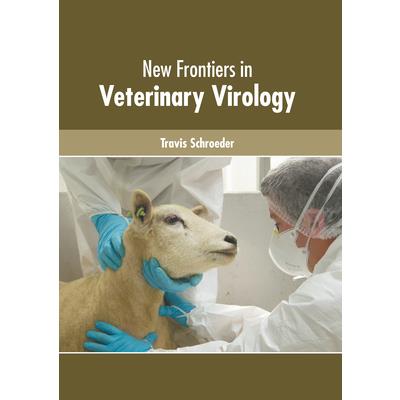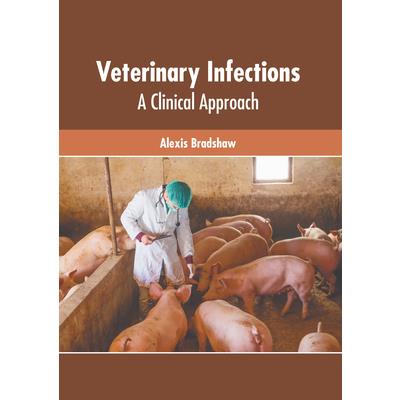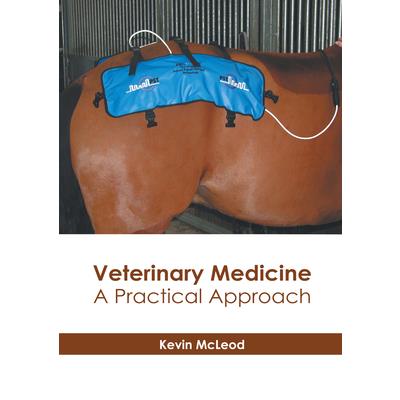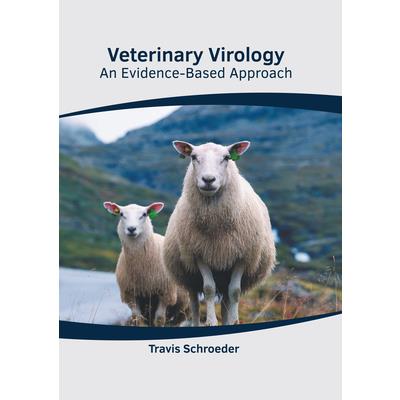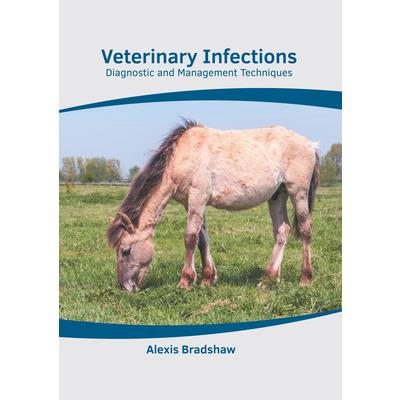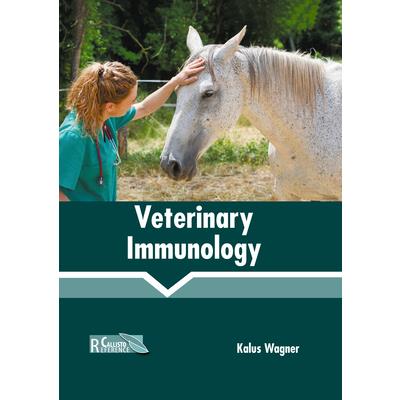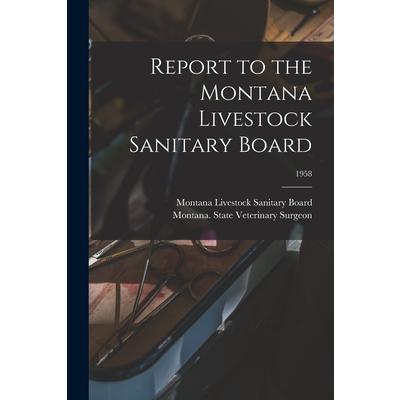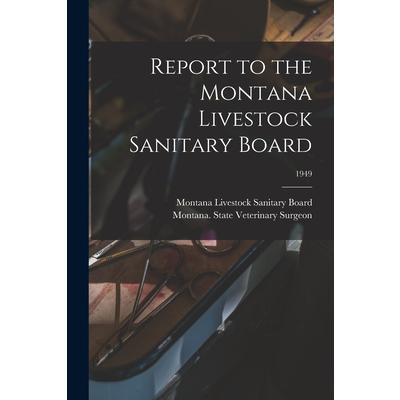Reliable Poultry Remedies
This work has been selected by scholars as being culturally important and is part of the knowledge base of civilization as we know it.This work is in the public domain in the United States of America, and possibly other nations. Within the United States, you may freely copy and distribute this work, as no entity (individual or corporate) has a copyright on the body of the work.Scholars believe, and we concur, that this work is important enough to be preserved, reproduced, and made generally available to the public. To ensure a quality reading experience, this work has been proofread and republished using a format that seamlessly blends the original graphical elements with text in an easy-to-read typeface.We appreciate your support of the preservation process, and thank you for being an important part of keeping this knowledge alive and relevant.
A New System of Horse-training, as Practiced and Taught by S.R. Clapp; Including a Treatise on Shoeing
This work has been selected by scholars as being culturally important and is part of the knowledge base of civilization as we know it.This work is in the public domain in the United States of America, and possibly other nations. Within the United States, you may freely copy and distribute this work, as no entity (individual or corporate) has a copyright on the body of the work.Scholars believe, and we concur, that this work is important enough to be preserved, reproduced, and made generally available to the public. To ensure a quality reading experience, this work has been proofread and republished using a format that seamlessly blends the original graphical elements with text in an easy-to-read typeface.We appreciate your support of the preservation process, and thank you for being an important part of keeping this knowledge alive and relevant.
Dr. A.C. Daniels’ Warranted Veterinary Medicines and How to Use Them
This work has been selected by scholars as being culturally important and is part of the knowledge base of civilization as we know it.This work is in the public domain in the United States of America, and possibly other nations. Within the United States, you may freely copy and distribute this work, as no entity (individual or corporate) has a copyright on the body of the work.Scholars believe, and we concur, that this work is important enough to be preserved, reproduced, and made generally available to the public. To ensure a quality reading experience, this work has been proofread and republished using a format that seamlessly blends the original graphical elements with text in an easy-to-read typeface.We appreciate your support of the preservation process, and thank you for being an important part of keeping this knowledge alive and relevant.
The Illustrated Horse Doctor
This work has been selected by scholars as being culturally important and is part of the knowledge base of civilization as we know it.This work is in the public domain in the United States of America, and possibly other nations. Within the United States, you may freely copy and distribute this work, as no entity (individual or corporate) has a copyright on the body of the work.Scholars believe, and we concur, that this work is important enough to be preserved, reproduced, and made generally available to the public. To ensure a quality reading experience, this work has been proofread and republished using a format that seamlessly blends the original graphical elements with text in an easy-to-read typeface.We appreciate your support of the preservation process, and thank you for being an important part of keeping this knowledge alive and relevant.
A Treatise on the Horse and His Diseases
This work has been selected by scholars as being culturally important and is part of the knowledge base of civilization as we know it.This work is in the public domain in the United States of America, and possibly other nations. Within the United States, you may freely copy and distribute this work, as no entity (individual or corporate) has a copyright on the body of the work.Scholars believe, and we concur, that this work is important enough to be preserved, reproduced, and made generally available to the public. To ensure a quality reading experience, this work has been proofread and republished using a format that seamlessly blends the original graphical elements with text in an easy-to-read typeface.We appreciate your support of the preservation process, and thank you for being an important part of keeping this knowledge alive and relevant.
The Veterinary Science [microform]
This work has been selected by scholars as being culturally important and is part of the knowledge base of civilization as we know it.This work is in the public domain in the United States of America, and possibly other nations. Within the United States, you may freely copy and distribute this work, as no entity (individual or corporate) has a copyright on the body of the work.Scholars believe, and we concur, that this work is important enough to be preserved, reproduced, and made generally available to the public. To ensure a quality reading experience, this work has been proofread and republished using a format that seamlessly blends the original graphical elements with text in an easy-to-read typeface.We appreciate your support of the preservation process, and thank you for being an important part of keeping this knowledge alive and relevant.
Veterinary Notes [microform]
This work has been selected by scholars as being culturally important and is part of the knowledge base of civilization as we know it.This work is in the public domain in the United States of America, and possibly other nations. Within the United States, you may freely copy and distribute this work, as no entity (individual or corporate) has a copyright on the body of the work.Scholars believe, and we concur, that this work is important enough to be preserved, reproduced, and made generally available to the public. To ensure a quality reading experience, this work has been proofread and republished using a format that seamlessly blends the original graphical elements with text in an easy-to-read typeface.We appreciate your support of the preservation process, and thank you for being an important part of keeping this knowledge alive and relevant.
On Sclerosis of the Spinal Cord
This work has been selected by scholars as being culturally important and is part of the knowledge base of civilization as we know it.This work is in the public domain in the United States of America, and possibly other nations. Within the United States, you may freely copy and distribute this work, as no entity (individual or corporate) has a copyright on the body of the work.Scholars believe, and we concur, that this work is important enough to be preserved, reproduced, and made generally available to the public. To ensure a quality reading experience, this work has been proofread and republished using a format that seamlessly blends the original graphical elements with text in an easy-to-read typeface.We appreciate your support of the preservation process, and thank you for being an important part of keeping this knowledge alive and relevant.
Pathological Horse-shoeing
This work has been selected by scholars as being culturally important and is part of the knowledge base of civilization as we know it.This work is in the public domain in the United States of America, and possibly other nations. Within the United States, you may freely copy and distribute this work, as no entity (individual or corporate) has a copyright on the body of the work.Scholars believe, and we concur, that this work is important enough to be preserved, reproduced, and made generally available to the public. To ensure a quality reading experience, this work has been proofread and republished using a format that seamlessly blends the original graphical elements with text in an easy-to-read typeface.We appreciate your support of the preservation process, and thank you for being an important part of keeping this knowledge alive and relevant.
Narrative Medicine in Veterinary Practice
This is the first guide to Veterinary Narrative Medicine, a cutting-edge approach in human medicine with multiple applications in veterinary medicine. The text combines the latest research with numerous real-world examples and practical techniques to improve client communication, patient care, and veterinary well-being. Narrative Medicine maintains that a patient should be viewed as an individual rather than an example of a disease process, and that this can be accomplished by using narrative. This book explores methods and theories from leaders in the human Narrative Medicine field while addressing topics unique to veterinary medicine. Readers will gain tools to help navigate difficult conversations and situations in clinical practice, including those involving the end of life. Narrative Medicine in Veterinary Practice also addresses the important issue of veterinary wellness. The ability to view the veterinarian's own stories and those of clients and patients as narratives may help practitioners maintain both emotional and work-place boundaries as well as decrease burnout and compassion fatigue. The book describes basic techniques to promote self-reflection and mindfulness, skills often overlooked in the veterinary profession which can improve resilience and increase the enjoyment of veterinary practice. This is important reading for veterinary practitioners, students, veterinary nurses, technicians, social workers, and all veterinary clinic staff.      
Hippopathology
This work has been selected by scholars as being culturally important and is part of the knowledge base of civilization as we know it.This work is in the public domain in the United States of America, and possibly other nations. Within the United States, you may freely copy and distribute this work, as no entity (individual or corporate) has a copyright on the body of the work.Scholars believe, and we concur, that this work is important enough to be preserved, reproduced, and made generally available to the public. To ensure a quality reading experience, this work has been proofread and republished using a format that seamlessly blends the original graphical elements with text in an easy-to-read typeface.We appreciate your support of the preservation process, and thank you for being an important part of keeping this knowledge alive and relevant.
A Treatise on the Prevention of Diseases Incidental to Horses
This work has been selected by scholars as being culturally important and is part of the knowledge base of civilization as we know it.This work is in the public domain in the United States of America, and possibly other nations. Within the United States, you may freely copy and distribute this work, as no entity (individual or corporate) has a copyright on the body of the work.Scholars believe, and we concur, that this work is important enough to be preserved, reproduced, and made generally available to the public. To ensure a quality reading experience, this work has been proofread and republished using a format that seamlessly blends the original graphical elements with text in an easy-to-read typeface.We appreciate your support of the preservation process, and thank you for being an important part of keeping this knowledge alive and relevant.
The Complete Farrier, or Horse Doctor [microform]
This work has been selected by scholars as being culturally important and is part of the knowledge base of civilization as we know it.This work is in the public domain in the United States of America, and possibly other nations. Within the United States, you may freely copy and distribute this work, as no entity (individual or corporate) has a copyright on the body of the work.Scholars believe, and we concur, that this work is important enough to be preserved, reproduced, and made generally available to the public. To ensure a quality reading experience, this work has been proofread and republished using a format that seamlessly blends the original graphical elements with text in an easy-to-read typeface.We appreciate your support of the preservation process, and thank you for being an important part of keeping this knowledge alive and relevant.
Evidence of Dr. J.G. Rutherford, Veterinary Director General and Live Stock Commissioner, Before the Select Standing Committee on Agriculture and Colonization, 1909 [microform]
This work has been selected by scholars as being culturally important and is part of the knowledge base of civilization as we know it.This work is in the public domain in the United States of America, and possibly other nations. Within the United States, you may freely copy and distribute this work, as no entity (individual or corporate) has a copyright on the body of the work.Scholars believe, and we concur, that this work is important enough to be preserved, reproduced, and made generally available to the public. To ensure a quality reading experience, this work has been proofread and republished using a format that seamlessly blends the original graphical elements with text in an easy-to-read typeface.We appreciate your support of the preservation process, and thank you for being an important part of keeping this knowledge alive and relevant.
Hippodonomia, or, The True Stucture, Laws, and Economy, of the Horse’s Foot [electronic Resource]
This work has been selected by scholars as being culturally important and is part of the knowledge base of civilization as we know it.This work is in the public domain in the United States of America, and possibly other nations. Within the United States, you may freely copy and distribute this work, as no entity (individual or corporate) has a copyright on the body of the work.Scholars believe, and we concur, that this work is important enough to be preserved, reproduced, and made generally available to the public. To ensure a quality reading experience, this work has been proofread and republished using a format that seamlessly blends the original graphical elements with text in an easy-to-read typeface.We appreciate your support of the preservation process, and thank you for being an important part of keeping this knowledge alive and relevant.
Short Notes on Veterinary Anatomy for the Use of Students at the O. A. C. [microform]
This work has been selected by scholars as being culturally important and is part of the knowledge base of civilization as we know it.This work is in the public domain in the United States of America, and possibly other nations. Within the United States, you may freely copy and distribute this work, as no entity (individual or corporate) has a copyright on the body of the work.Scholars believe, and we concur, that this work is important enough to be preserved, reproduced, and made generally available to the public. To ensure a quality reading experience, this work has been proofread and republished using a format that seamlessly blends the original graphical elements with text in an easy-to-read typeface.We appreciate your support of the preservation process, and thank you for being an important part of keeping this knowledge alive and relevant.
The Canadian Farrier, and Cattle-keeper’s Guide [microform]
This work has been selected by scholars as being culturally important and is part of the knowledge base of civilization as we know it.This work is in the public domain in the United States of America, and possibly other nations. Within the United States, you may freely copy and distribute this work, as no entity (individual or corporate) has a copyright on the body of the work.Scholars believe, and we concur, that this work is important enough to be preserved, reproduced, and made generally available to the public. To ensure a quality reading experience, this work has been proofread and republished using a format that seamlessly blends the original graphical elements with text in an easy-to-read typeface.We appreciate your support of the preservation process, and thank you for being an important part of keeping this knowledge alive and relevant.
The Veterinary Surgeon, or, Farriery Taught on a New and Easy Plan [microform]
This work has been selected by scholars as being culturally important and is part of the knowledge base of civilization as we know it.This work is in the public domain in the United States of America, and possibly other nations. Within the United States, you may freely copy and distribute this work, as no entity (individual or corporate) has a copyright on the body of the work.Scholars believe, and we concur, that this work is important enough to be preserved, reproduced, and made generally available to the public. To ensure a quality reading experience, this work has been proofread and republished using a format that seamlessly blends the original graphical elements with text in an easy-to-read typeface.We appreciate your support of the preservation process, and thank you for being an important part of keeping this knowledge alive and relevant.
A Treatise on the Horse and His Diseases
This work has been selected by scholars as being culturally important and is part of the knowledge base of civilization as we know it.This work is in the public domain in the United States of America, and possibly other nations. Within the United States, you may freely copy and distribute this work, as no entity (individual or corporate) has a copyright on the body of the work.Scholars believe, and we concur, that this work is important enough to be preserved, reproduced, and made generally available to the public. To ensure a quality reading experience, this work has been proofread and republished using a format that seamlessly blends the original graphical elements with text in an easy-to-read typeface.We appreciate your support of the preservation process, and thank you for being an important part of keeping this knowledge alive and relevant.
Veterinary Parasitology
This work has been selected by scholars as being culturally important and is part of the knowledge base of civilization as we know it.This work is in the public domain in the United States of America, and possibly other nations. Within the United States, you may freely copy and distribute this work, as no entity (individual or corporate) has a copyright on the body of the work.Scholars believe, and we concur, that this work is important enough to be preserved, reproduced, and made generally available to the public. To ensure a quality reading experience, this work has been proofread and republished using a format that seamlessly blends the original graphical elements with text in an easy-to-read typeface.We appreciate your support of the preservation process, and thank you for being an important part of keeping this knowledge alive and relevant.
Register of the Members of the Royal College of Veterinary Surgeons From January, 1794, to May, 1874, Inclusive [electronic Resource]
This work has been selected by scholars as being culturally important and is part of the knowledge base of civilization as we know it.This work is in the public domain in the United States of America, and possibly other nations. Within the United States, you may freely copy and distribute this work, as no entity (individual or corporate) has a copyright on the body of the work.Scholars believe, and we concur, that this work is important enough to be preserved, reproduced, and made generally available to the public. To ensure a quality reading experience, this work has been proofread and republished using a format that seamlessly blends the original graphical elements with text in an easy-to-read typeface.We appreciate your support of the preservation process, and thank you for being an important part of keeping this knowledge alive and relevant.
Black Beauty
This work has been selected by scholars as being culturally important and is part of the knowledge base of civilization as we know it.This work is in the public domain in the United States of America, and possibly other nations. Within the United States, you may freely copy and distribute this work, as no entity (individual or corporate) has a copyright on the body of the work.Scholars believe, and we concur, that this work is important enough to be preserved, reproduced, and made generally available to the public. To ensure a quality reading experience, this work has been proofread and republished using a format that seamlessly blends the original graphical elements with text in an easy-to-read typeface.We appreciate your support of the preservation process, and thank you for being an important part of keeping this knowledge alive and relevant.
Town Lot Poultry Keeping; New Types of Houses, Appliances, Brooders, Curing of Diseases, Formulaes for Feeding, and a New Chart for Line Breeding
This work has been selected by scholars as being culturally important and is part of the knowledge base of civilization as we know it.This work is in the public domain in the United States of America, and possibly other nations. Within the United States, you may freely copy and distribute this work, as no entity (individual or corporate) has a copyright on the body of the work.Scholars believe, and we concur, that this work is important enough to be preserved, reproduced, and made generally available to the public. To ensure a quality reading experience, this work has been proofread and republished using a format that seamlessly blends the original graphical elements with text in an easy-to-read typeface.We appreciate your support of the preservation process, and thank you for being an important part of keeping this knowledge alive and relevant.
Principles of Veterinary Radiography
This work has been selected by scholars as being culturally important and is part of the knowledge base of civilization as we know it.This work is in the public domain in the United States of America, and possibly other nations. Within the United States, you may freely copy and distribute this work, as no entity (individual or corporate) has a copyright on the body of the work.Scholars believe, and we concur, that this work is important enough to be preserved, reproduced, and made generally available to the public. To ensure a quality reading experience, this work has been proofread and republished using a format that seamlessly blends the original graphical elements with text in an easy-to-read typeface.We appreciate your support of the preservation process, and thank you for being an important part of keeping this knowledge alive and relevant.
The People’s Horse, Cattle, Sheep, and Swine Doctor
This work has been selected by scholars as being culturally important and is part of the knowledge base of civilization as we know it.This work is in the public domain in the United States of America, and possibly other nations. Within the United States, you may freely copy and distribute this work, as no entity (individual or corporate) has a copyright on the body of the work.Scholars believe, and we concur, that this work is important enough to be preserved, reproduced, and made generally available to the public. To ensure a quality reading experience, this work has been proofread and republished using a format that seamlessly blends the original graphical elements with text in an easy-to-read typeface.We appreciate your support of the preservation process, and thank you for being an important part of keeping this knowledge alive and relevant.
Everyday Farriery, or, The Management of Stock From Disease to Health
This work has been selected by scholars as being culturally important and is part of the knowledge base of civilization as we know it.This work is in the public domain in the United States of America, and possibly other nations. Within the United States, you may freely copy and distribute this work, as no entity (individual or corporate) has a copyright on the body of the work.Scholars believe, and we concur, that this work is important enough to be preserved, reproduced, and made generally available to the public. To ensure a quality reading experience, this work has been proofread and republished using a format that seamlessly blends the original graphical elements with text in an easy-to-read typeface.We appreciate your support of the preservation process, and thank you for being an important part of keeping this knowledge alive and relevant.
Advances in Veterinary Oncology
The subspecialty within veterinary medicine which deals with the diagnosis of cancer in animals as well as its treatment is known as veterinary oncology. Due to a large number of deaths in pet animals being caused by cancer, veterinary oncology is an important field of study within veterinary medicine. Many animals such as cats and dogs suffer from similar cancers as humans. Thus, advances in veterinary oncology and human cancer research complement each other in a way which benefits both animals and humans. There are various treatments which are used to cure and control cancer in animals such as surgery, chemotherapy and radiation therapy. This book includes contributions of experts and scientists which will provide innovative insights into this field. It provides significant information of this discipline to help develop a good understanding of veterinary oncology and the advances which have been made in it.
Swine Diseases and Health Management
African swine fever, classical swine fever, pseudorabies, influenza A virus in swine, etc. are some of the common swine diseases. Classical swine fever (CSF) is a highly contagious disease of swine that causes skin lesions, fever and convulsions, and ultimately culminates in death. Artificial immunization procedures can confer immunity against this condition. Diagnostic tests, such as direct and indirect immunofluorescence, ELISA and histology of the brain can be used to detect the disease. Swine vesicular disease (SVD) is another acute and contagious viral disease that is caused by the swine vesicular disease virus. It is typically characterized by fever, ulcers in the mouth and snout, feet and teats. This disease can infect pigs by exposure to feed containing lethal meal scraps, or infected fecal matter. Since no vaccine exists for this condition, various eradication measures are adopted such as quarantining infected areas, disposal and depopulation of infected pigs and disinfecting contaminated premises. This book covers in detail some existing theories and innovative concepts revolving around swine health. Some of the diverse topics covered in this book address the varied swine diseases that fall under this category. It is a vital tool for all researching or studying swine diseases as it gives incredible insights into emerging trends and concepts.
Principles and Practice of Veterinary Science
Veterinary science is an extensive field of study. From theories to research to practical applications, case studies related to all contemporary topics of relevance in the field of veterinary science have been included in this book. Veterinary science deals with the diagnosis of diseases in animals along with its treatment and prevention. This book is a valuable compilation of topics, ranging from the basic to the most complex advancements in this discipline. For all readers who are interested in veterinary science, the case studies included in this book will serve as an excellent guide to develop a comprehensive understanding. It will help new researchers by foregrounding their knowledge in this branch. This book is an essential guide for both academicians and those who wish to pursue this discipline further.
Animal Diseases: Diagnosis and Treatment
Veterinary science is concerned with the scientific study and analysis of animal diseases to prevent, diagnose or treat different ailments and disorders. It encompasses the monitoring and control of zoonotic diseases to prevent infection in humans. Animal diseases can be categorized according to the causative agents into animal bacterial diseases, animal fungal diseases and animal viral diseases. Some of the diverse topics covered in this book address the varied branches that fall under this discipline. It strives to provide a fair idea about this field and to help develop a better understanding of the latest advances in this area of study. Scientists and students actively engaged in this domain will find this book full of crucial and unexplored concepts.
Animal Medicine for Veterinarians
This book elucidates the concepts and innovative models around prospective developments with respect to animal medicine. It includes some of the vital pieces of work being conducted across the world, on various topics related to this subject. Animal medicine concerns itself with the treatment, diagnosis and prevention of diseases that affect animals. Various laboratory tests are conducted to diagnose diseases and treatment plans are formed accordingly. This book explores all the important aspects of animal medicine in the present day scenario. The various studies that are constantly contributing towards advancing technologies and evolution of this field are examined in detail in the book. It will help veterinarians by foregrounding their knowledge in this branch. It will serve as a valuable source of reference for graduate and post graduate students.
Veterinary Medicine: From Theory to Clinical Practice
Veterinary medicine is the branch of medicine that is concerned with the treatment of diseases for the welfare of animals. Apart from developing and applying disease interventions in animals, it is also involved in performing cosmetic procedures on animals which include declawing of cats, cropping of ears, docking of tails, etc. Veterinary surgery is an upcoming area of veterinary medicine. Surgical procedures in animals fall within the three broad categories of orthopedics, soft tissue surgery and neurosurgery. Some of the routine veterinary procedures include spaying, castration, minor mass excision, etc. Advanced surgical procedures such as joint replacement, fracture repair, oncologic surgery, kidney transplant, etc. are also conducted in animals. This book attempts to understand the multiple branches that fall under the discipline of veterinary medicine. It elucidates the concepts and innovative models around prospective developments with respect to this field. This book is a resource guide for experts as well as students.
Veterinary Science: From Theories to Practice
Veterinary science deals with the disease diagnosis and medical treatment and medication of all animals. This book on veterinary science encompasses various specialties such as veterinary pathology, veterinary pharmacology and veterinary public health. This book is meant for students who are looking for an elaborate reference text on veterinary science. Contents included reflect the advanced research that has taken place in this field in the last few decades. It is a vital tool for all researching and studying this field. The topics covered in this book offer the readers new insights in the field of veterinary science. It will help the readers gain knowledge that would broaden their perspective this discipline.
Clinical Signs in Humans and Animals Associated with Minerals, Trace Elements and Rare Earth Elements
The first book to compile the clinical signs associated with deficiencies, toxicities, imbalances, or exposures to minerals, trace elements, and rare earth elements in humans and animal species, Clinical Signs in Humans and Animals Associated With Minerals, Trace Elements, and Rare Earth Elements aims to increase awareness to improve diagnosis and to encourage further investigation based on comparative data. Written by an experienced veterinary clinician having worked in private practice, academia, and pharmaceutical and pet food industries, this book includes data on humans and primates, as well as companion animals, horses, rabbits, reptiles, ruminants, poultry, fish, and species typical in zoo populations. The subject material is divided into three sections to provide easy access to information on clinical signs, specific elements, or species. This book is written for medical and veterinary researchers, clinicians, and practitioners, specifically those working with animal nutrition and animal feed health. Academics and public health scientists will also benefit from the book's information and data on rehabilitating and maintaining animal health.
Avian Malaria and Related Parasites in the Tropics
1 - Avian Haemosporida research in the Neotropics before the year 2000.- 2 - Phylogenetics and systematics in a nutshell.- 3 - Life cycle, taxonomy, and molecular biology of avian haemosporidian parasites, with a discussion of research techniques.- 4 - Introduction to the taxonomy of Diptera vectors of medical and veterinary importance in the tropics.- 5 - The ecology of Diptera vectors of avian haemosporidians in the tropics: with emphasis in the neotropical region.- 6 - Geographical distribution patterns of malaria and other haemosporida in the Neotropics: a review from a biogeographical perspective and ecological niche modelling.- 7 - Island biogeography of avian haemosporidians in the tropics: with emphasis on the neotropical region.- 8 - Altitudinal and latitudinal patterns of tropical avian haemosporidians.- 9 - An introduction to macroecology and ecological networks for antagonistic interactions.- 10 - Host specialization and dispersal in avian haemosporidians.- 11 - Cophylogenetic patterns and speciation.- 12 - Community ecology and network analysis of tropical avian haemosporidians.- 13 - An introduction to urban and landscape ecology.- 14 - Anthropic impacts on avian haemosporidians and their vectors.- 15 - The role of parasites in invasion biology16 - Avian migration as a mechanism of latitudinal parasite spread between tropical and temperate regions.- 17 - Experimental parasitology and ecoimmunology: concepts and opportunities.- 18 - Concluding remarks.
Biological Properties of the Stem Cells and their Effect on Restoring Animal Myocardium after Experimental Ischemic Infarction
Scientific Study from the year 2021 in the subject Veterinary medicine, language: English, abstract: The research mainly focuses on the culture of myocardium-derived stem cells as an alternative source of the cell materials for treating patients with heart disease. Myocardial ischemia is a heart dysfunction caused by insufficient blood supply to its muscle tissue. This supply decrease can be related to the narrowing of coronary arteries, coronary thrombosis, or diffusive narrowing of arterioles and other small-sized vessels of the heart. Stopping the blood supply to the myocardium may lead to cardiac muscle necrosis (myocardial infarction). Coronary arteries perfuse the heart and help transport the nutrients and Oxygen to metabolically active myocardium. Nowadays, myocardial ischemia, which is associated with atherosclerosis and coronary arteries obstruction, is the leading cause of death for both men and women, and according to the predictions it will remain so until 2030. Myocardial ischemia and myocardial infarction, which is associated with coronary arteries diseases, can also happen to small animals like cats and dogs, which may lead to a sudden death or death while under anesthesia. Because the heart of adult mammals has extremely limited regeneration ability and the lost cells are replaced with fibrous scars, there is a need for search for treatment methods that are aimed at restoring the structure of cardiac muscle after the ischemia. Cell technologies are a promising treatment method for animals with myocardial infarction that restores its structure and contractile function. In the past 50 years there have been a significant number of experimental researches that deal with the cell technologies issues. As a result of the research, we understand that stem cells and their derivatives may lay foundation for developing the innovative cell technologies, at any stage of histogenesis. The spectrum of clinical issues that this kind of treatment methods is e
New Frontiers in Veterinary Virology
There are many viruses that affect the health of animals, and the field of study related to viruses in animals is known as veterinary virology. Some of these viruses have their own range and infect particular species. There are also some viruses which can affect different species. Veterinary virology focuses on the study of viruses like rhabdoviruses, foot and mouth disease viruses, circoviruses, herpes viruses and retroviruses. Rhabdoviruses are single stranded, negative sense RNA viruses inheriting six genera which infect a wide variety of plants and animals. Foot and mouth disease viruses are positive strand, non-enveloped, RNA viruses that can cause foot and mouth diseases in animals. Herpes viruses consist of ubiquitous pathogens which can infect both animals and humans. Retroviruses are a type of viruses that can cause cancer or immune deficiency. This book provides comprehensive insights into the field of veterinary virology. Its aim is to present researches that have transformed this discipline and aided its advancement. This book aims to serve as a resource guide for students and experts alike and contribute to the growth of the discipline.
Veterinary Infections: A Clinical Approach
The infections that affect animals are known as veterinary infections. The most common of such diseases are anthrax, foot and mouth disease, black quarter, tetanus and listeriosis. Anthrax is caused by the bacterium named as bacillus anthracis. It usually occurs in four forms - lungs, skin, intestinal and injection. The symptoms of anthrax include blister, fever, chest pain, abdominal pains, nausea and vomiting. Black quarter, also known as black leg disease, is commonly caused by the bacterium clostridium chauvoei. It is often seen in livestock such as cattle, goats and sheep. Foot and mouth disease is a highly infectious veterinary disease that is caused by a virus. It affects the cloven-hoofed animals and causes fever, blisters on the feet and inside the mouth, and causes lameness. This book provides comprehensive insights into the field of veterinary infections. Coherent flow of topics, student-friendly language and extensive use of examples make this book an invaluable source of knowledge.
Veterinary Medicine: A Practical Approach
The branch of medicine which deals with the diagnosis, prevention and treatment of diseases, injury and disorders in animals is known as veterinary medicine. It covers all the species of animals including wild and domestic animals. It is involved in preventing the transmission of diseases from animals to humans. Veterinary medicine also deals with the welfare and basic biology of animals. Specialization in veterinary medicine could be in a particular category of animals such as companion animals or farm animals. It can also be in a particular area of medicine like anesthesiology or dentistry. This book provides comprehensive insights into the field of veterinary medicine. It strives to provide a fair idea about this discipline and to help develop a better understanding of the latest advances within this field. The book aims to equip students and experts with the advanced topics and upcoming concepts in this area.
Case Studies in Veterinary Virology
Veterinary virology is a major branch of veterinary medicine that studies viruses in non-human animals. Some of the viruses studied under this discipline are rhabdoviruses, foot and mouth disease viruses, pestiviruses, parvoviruses, coronaviruses, toroviruses and influenza etc. Rhabdoviruses are single stranded, negative sense RNA viruses which can infect a wide variety of animals. A few examples of rhabdoviruses are rabies virus and vesicular stomatitis virus. Foot and mouth disease viruses are non-enveloped, positive strand, RNA viruses that cause foot and mouth diseases in animals such as cattle, sheep and pigs. Pestiviruses are made up of single stranded, positive-sense RNA genomes. Diseases like classic swine fever and bovine viral diarrhea are caused due to these viruses. Parvoviruses are one of the tiniest viruses. They cause diseases in the gastrointestinal tract and lymphatic system. This book explores all the important aspects of veterinary virology. It also elucidates some of the vital pieces of work conducted across the world, on various topics related to this field. The extensive content of this book provides the readers with a thorough understanding of the subject.
Veterinary Virology: An Evidence-Based Approach
The study related to the viruses in animals is known as veterinary virology. It is a sub-field of veterinary medicine. Each animal species is affected by different types of viruses. However, there are also some viruses which can affect different species as well as both vertebrates and invertebrates. Some of the viruses which affect vertebrates are bluetongue virus, rabies virus and rhabdovirus. Bluetongue virus generally infects livestock while rabies virus can infect a large variety of animals such as dogs, monkeys, foxes and bats. Rhabdovirus is single stranded, negative sense RNA virus inheriting six genera that infect a wide variety of animals such as cattle, fish, horse, bovine, etc. Invertebrates such as honey bees are infected by deformed wing virus. This book contains some path-breaking studies in the field of veterinary virology. Different approaches, evaluations, methodologies and advanced studies on veterinary virology have been included herein. Researchers and students in this field will be assisted by the content of this book.
Recent Advances in Veterinary Surgery
The surgery that is performed by veterinarians on animals is known as veterinary surgery. It has been divided into three broad categories, namely, orthopedics, soft tissue surgery and neurosurgery. Orthopedics surgery is the surgery of joints, bones and muscles. A few examples of orthopedic surgery are bone fracture repair, hip dysplasia and arthroscopy. Soft tissue surgery includes the surgery related to body cavities, skin, cardiovascular system and respiratory tracts. Some of the other surgical procedures which are used in modern veterinary surgery are joint replacement, skin grafts and urogenital procedures. The surgical procedures which do not involve life-threatening conditions are known as elective procedures. A few examples of these surgeries are sterilization surgery, dental surgery, ophthalmic surgery and cardiology surgery. This book contains some path-breaking studies in the field of veterinary surgery and its advances. It also traces the progress of this field and highlights some of its key concepts and applications. This book is appropriate for students seeking detailed information in this area as well as for experts.
Veterinary Science and Medicine
The branch of medicine which deals with the diagnosis, treatment and prevention of diseases and disorders in animals is referred to as veterinary science and medicine. It focuses on all species of animals as well as the conditions that affect them. Veterinary science also plays an important role in ensuring human health. This is done by preventing humans from getting infected by zoonotic diseases. Veterinary medicine also takes care of food safety and helps to maintain food supply by the monitoring and treatment of livestock health. This book is compiled in such a manner, that it will provide in-depth knowledge about the theory and practice of veterinary science and medicine. While understanding the long-term perspectives of the topics, it makes an effort in highlighting their impact as a modern tool for the growth of the discipline. The book, with its detailed analyses and data, will prove immensely beneficial to professionals and students involved in this area at various levels.
Veterinary Infections: Diagnostic and Management Techniques
The infections that affect animals are known as veterinary infections. The most common of such diseases are anthrax, foot and mouth disease, black quarter, tetanus and listeriosis. Anthrax is caused by the bacterium named as Bacillus anthracis. It usually occurs in four forms - lungs, skin, intestinal and injection. The symptoms of anthrax include blister, fever, chest pain, abdominal pain, nausea and vomiting. Black quarter, also known as blackleg disease, is commonly caused by the bacteria Clostridium chauvoei. It is often seen in livestock such as cattle, goats and sheep. Foot and mouth disease is a highly infectious veterinary disease that is caused by a virus. It affects the cloven-hoofed animals and causes fever, blisters on the feet and inside the mouth, and causes lameness. This book provides comprehensive insights into the area of veterinary infections. It presents researches and studies performed by experts across the globe. Coherent flow of topics, student-friendly language and extensive use of examples make this book an invaluable source of knowledge.
Veterinary Immunology
Immunology is a discipline of biology that deals with the study of immune system in organisms. Veterinary immunology is the domain of biomedical sciences that focuses on the study of all aspects of immune system in animals. It is involved in measuring, contextualizing and charting the physiological functions, malfunctions, and the physical, chemical and physiological characteristics of the components of the immune system. The key aspects of veterinary immunology focus on how the immune system functions, how diseases are prevented and why vaccines sometimes do not work and lead to adverse reactions. This book provides comprehensive insights into the field of veterinary immunology. It also presents researches and studies performed by experts across the globe. The extensive content of this book provides the readers with a thorough understanding of the subject.
Report to the Montana Livestock Sanitary Board; 1958
This work has been selected by scholars as being culturally important and is part of the knowledge base of civilization as we know it.This work is in the public domain in the United States of America, and possibly other nations. Within the United States, you may freely copy and distribute this work, as no entity (individual or corporate) has a copyright on the body of the work.Scholars believe, and we concur, that this work is important enough to be preserved, reproduced, and made generally available to the public. To ensure a quality reading experience, this work has been proofread and republished using a format that seamlessly blends the original graphical elements with text in an easy-to-read typeface.We appreciate your support of the preservation process, and thank you for being an important part of keeping this knowledge alive and relevant.
A Survey of Infectious Laryngotracheitis of Fowls; B520
This work has been selected by scholars as being culturally important and is part of the knowledge base of civilization as we know it.This work is in the public domain in the United States of America, and possibly other nations. Within the United States, you may freely copy and distribute this work, as no entity (individual or corporate) has a copyright on the body of the work.Scholars believe, and we concur, that this work is important enough to be preserved, reproduced, and made generally available to the public. To ensure a quality reading experience, this work has been proofread and republished using a format that seamlessly blends the original graphical elements with text in an easy-to-read typeface.We appreciate your support of the preservation process, and thank you for being an important part of keeping this knowledge alive and relevant.
Report to the Montana Livestock Sanitary Board; 1949
This work has been selected by scholars as being culturally important and is part of the knowledge base of civilization as we know it.This work is in the public domain in the United States of America, and possibly other nations. Within the United States, you may freely copy and distribute this work, as no entity (individual or corporate) has a copyright on the body of the work.Scholars believe, and we concur, that this work is important enough to be preserved, reproduced, and made generally available to the public. To ensure a quality reading experience, this work has been proofread and republished using a format that seamlessly blends the original graphical elements with text in an easy-to-read typeface.We appreciate your support of the preservation process, and thank you for being an important part of keeping this knowledge alive and relevant.





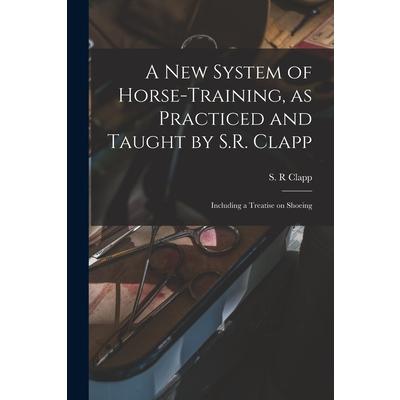

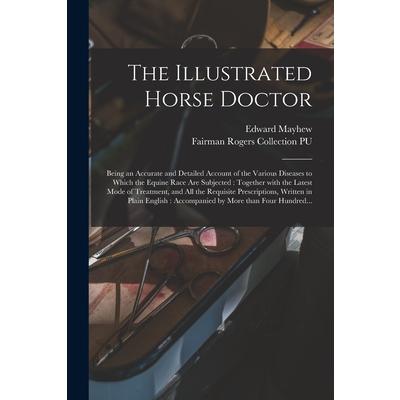

![The Veterinary Science [microform] The Veterinary Science [microform]](https://cdn.kingstone.com.tw/english/images/product/8926/9781015138926.jpg)
![Veterinary Notes [microform] Veterinary Notes [microform]](https://cdn.kingstone.com.tw/english/images/product/3537/9781013893537.jpg)

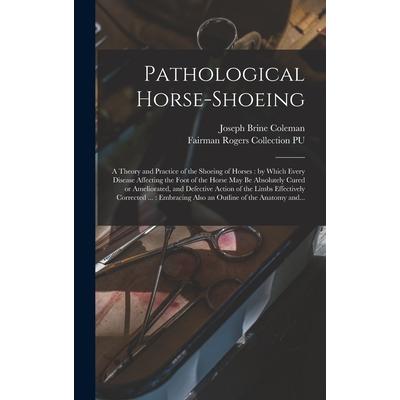
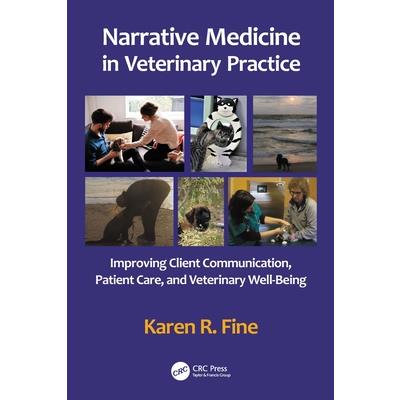
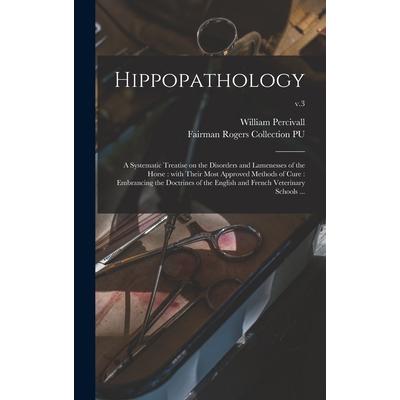
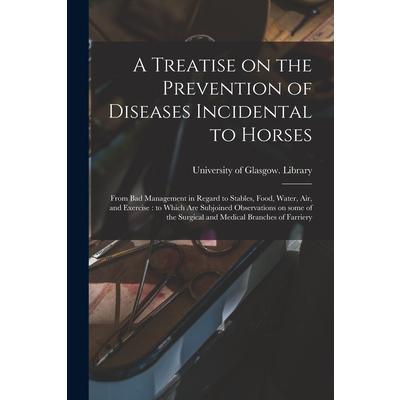
![The Complete Farrier, or Horse Doctor [microform] The Complete Farrier, or Horse Doctor [microform]](https://cdn.kingstone.com.tw/english/images/product/8700/9781015318700.jpg)
![Evidence of Dr. J.G. Rutherford, Veterinary Director General and Live Stock Commissioner, Before the Select Standing Committee on Agriculture and Colonization, 1909 [microform] Evidence of Dr. J.G. Rutherford, Veterinary Director General and Live Stock Commissioner, Before the Select Standing Committee on Agriculture and Colonization, 1909 [microform]](https://cdn.kingstone.com.tw/english/images/product/2747/9781013702747.jpg)
![Hippodonomia, or, The True Stucture, Laws, and Economy, of the Horse’s Foot [electronic Resource] Hippodonomia, or, The True Stucture, Laws, and Economy, of the Horse’s Foot [electronic Resource]](https://cdn.kingstone.com.tw/english/images/product/9666/9781015359666.jpg)
![Short Notes on Veterinary Anatomy for the Use of Students at the O. A. C. [microform] Short Notes on Veterinary Anatomy for the Use of Students at the O. A. C. [microform]](https://cdn.kingstone.com.tw/english/images/product/6612/9781015336612.jpg)
![The Canadian Farrier, and Cattle-keeper’s Guide [microform] The Canadian Farrier, and Cattle-keeper’s Guide [microform]](https://cdn.kingstone.com.tw/english/images/product/2932/9781015362932.jpg)
![The Veterinary Surgeon, or, Farriery Taught on a New and Easy Plan [microform] The Veterinary Surgeon, or, Farriery Taught on a New and Easy Plan [microform]](https://cdn.kingstone.com.tw/english/images/product/2976/9781014552976.jpg)

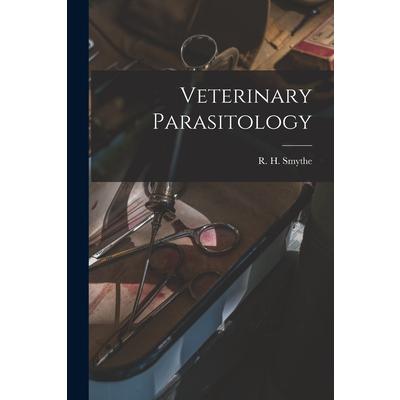
![Register of the Members of the Royal College of Veterinary Surgeons From January, 1794, to May, 1874, Inclusive [electronic Resource] Register of the Members of the Royal College of Veterinary Surgeons From January, 1794, to May, 1874, Inclusive [electronic Resource]](https://cdn.kingstone.com.tw/english/images/product/8145/9781015238145.jpg)


